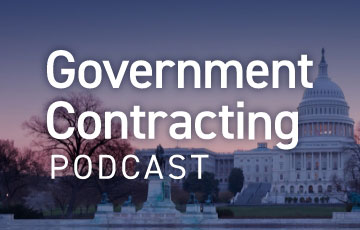Listen to Eric Poppe, Managing Director in Cherry Bekaert’s Government Contracting practice and Rich Wilkinson, Director of Product Marketing at Unanet discuss the importance of indirect rates. Indirect rates are more than just a math exercise. Having rates isn’t the objective. It’s having something you can use to figure out what your costs are. This is part one of a four-part series on indirect rates that Cherry Bekaert and Unanet will explore. In this episode we discuss:
Why do government contracting firms need indirect rates?
- For pricing, estimating and forecasting
- For managing project costs to the total cost line
- If the firm has cost-type contracts, for billing the costs
- If the firm has T&M contracts with G&A applied to non-labor, for billing the non-labor costs
- If the firm has fixed price contracts with potential for increase(s) in scope, for pricing/negotiating the mods
Where do you start?
- Well before the beginning of the fiscal year, prepare a budget for the coming year
- Develop indirect rates from that budget
- Submit the rates and support to your cognizant Administrative Contracting Officer (ACO) or the Defense Contract Audit Agency (DCAA)
Once approved by the government, use the rates for managing projects and forecasting costs and revenue (internal) and for billing and pricing (external).
But that’s not the end. Developing rates and getting them approved is just the beginning of the cycle. In the next segment, we will discuss monitoring your rates during the year and what to do if your indirect rates aren’t what you thought they would be.
- Indirect Rates – Monitoring and Best Practices in Calculating Your Rates: Part Two
- Indirect Rates – The Close Out Process: Part Three
- Indirect Rates – Incurred Cost Submissions: Part Four
View All Government Contracting Podcasts

